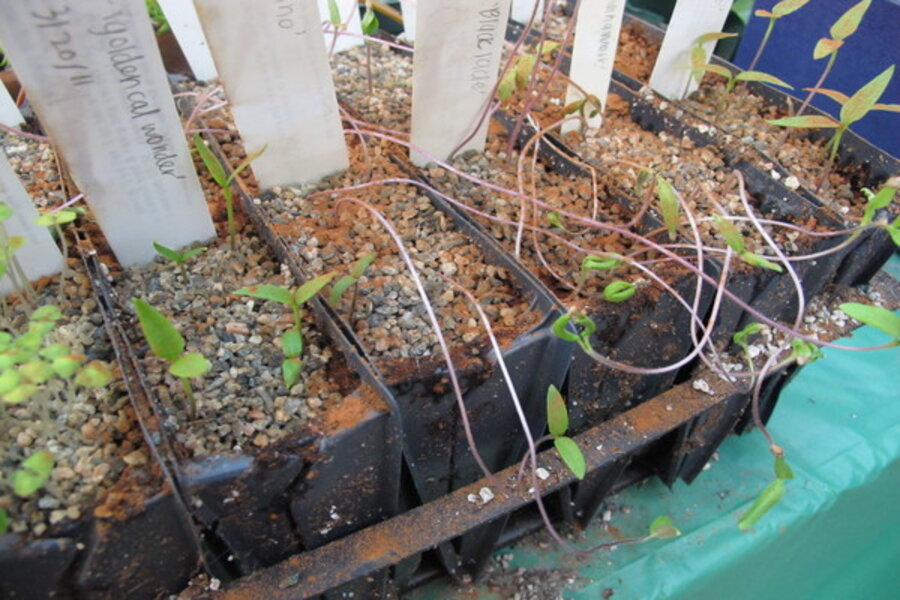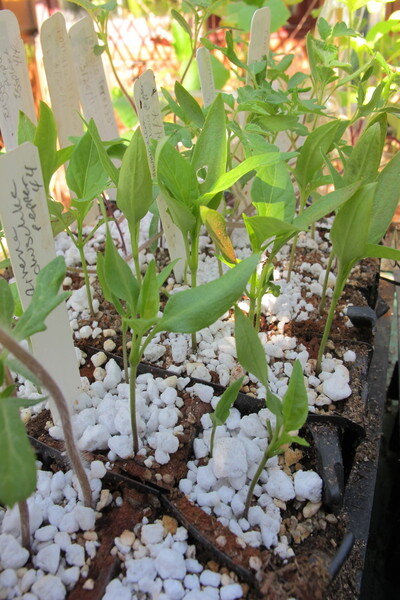Seed starting: A lesson learned
Loading...
In my garden, springtime is seed-starting time. Warmer weather brings dreams of rosy red tomatoes, deep purple eggplants, and golden peppers. Those dreams lead to several sessions of “making mud pies” as I go through the process of starting seeds.
I’ve been starting seeds long enough now to be pretty good at it; so good that I taught several seed-starting workshops these past few months.
Still, I make mistakes. And this year, I made a doozy of a mistake.
It started because I was going out of town for a week. I was heading to San Mateo to speak at the San Francisco Flower and Garden Show.
A plan that went awry
By time I returned, I would have missed the earliest opportunity to get seeds started. A week makes a big difference in the life of a seedling. After all, its only six to eight weeks between the time the seed is set onto damp seed-starting mix, and the seedling is big enough to plant in the garden!
The afternoon before I left, I organized my seed packets, and disinfected my containers and plant labels. I coerced my teenage daughter to write plant labels for me (I paid her) while I filled the containers with dampened seed starting mix.
Then, I spent a couple of hours placing tiny seeds of pepper, eggplant, tomato, and the like onto the surface of the seed mix. Once the seeds were pressed into the surface, I covered them with gravel grit to prevent the deadly “damping off” fungus that makes tender sprouts shrivel at the base.
The containers with their precious, hidden seeds went onto a heat mat atop the dryer in my laundry room. By time I returned from San Francisco, the seeds should have sprouted and be ready to move outside.
Unlike other regions of the country, our Southern California temperatures are mild enough for seedlings to go outside just as soon as they sprout. No need to grow them to transplant size under grow lights indoors, then spend two weeks hardening off.
Too much heat
Herein lies my big boo-boo.
A week on the heat mat proved to be too much. The seeds sprouted. Then, because of the prolonged heat, they elongated way too fast. The poor tomatoes looked the worst. Their four-inch-long, white stems were so spindly that they’d fallen over under the weight of just two little green seed leaves.
Damping off, the enemy of all seedlings, had infected many of the tomatoes and all of the cucumbers, despite my protective layer of granite grit. Most peppers were OK. The basil sprouts were too yellow but looked as if they would recover.
A fresh start
It took me a week to bring myself to start over, but, of course, that’s what I did.
While in San Francisco, I had bought some Italian vegetable seeds. So, in addition to restarting seeds, I also started some new ones: a purple blush artichoke called ‘Violetta,’ and some wonderful looking Italian heritage eggplants.
Again, I topped each container in a layer of granite grit. And then, to be doubly sure to avert damping off, I sprinkled the container surfaces with cinnamon. Cinnamon isn’t the cheapest fungicide but it is surprisingly effective. And it smells delicious.
The seeds went back on the heat mat. This time, however, they went outside as soon as they sprouted. Today, they are green, stout, and healthy, almost ready to go into the ground.
Every year, I learn something new about working with seeds. This year’s lesson reminded me to be careful with the heat. And when I taught those seed-starting workshops, I had a really good tale of caution to share with my students.
-----
Nan Sterman is a popular writer and speaker about gardening and is a garden coach and garden designer. She also hosts the TV show "A Growing Passion" in San Diego and is the author of "Water-Wise Plants for the Southwest" and "California Gardener's Guide, Vol. II." Her website is Plant Soup.






